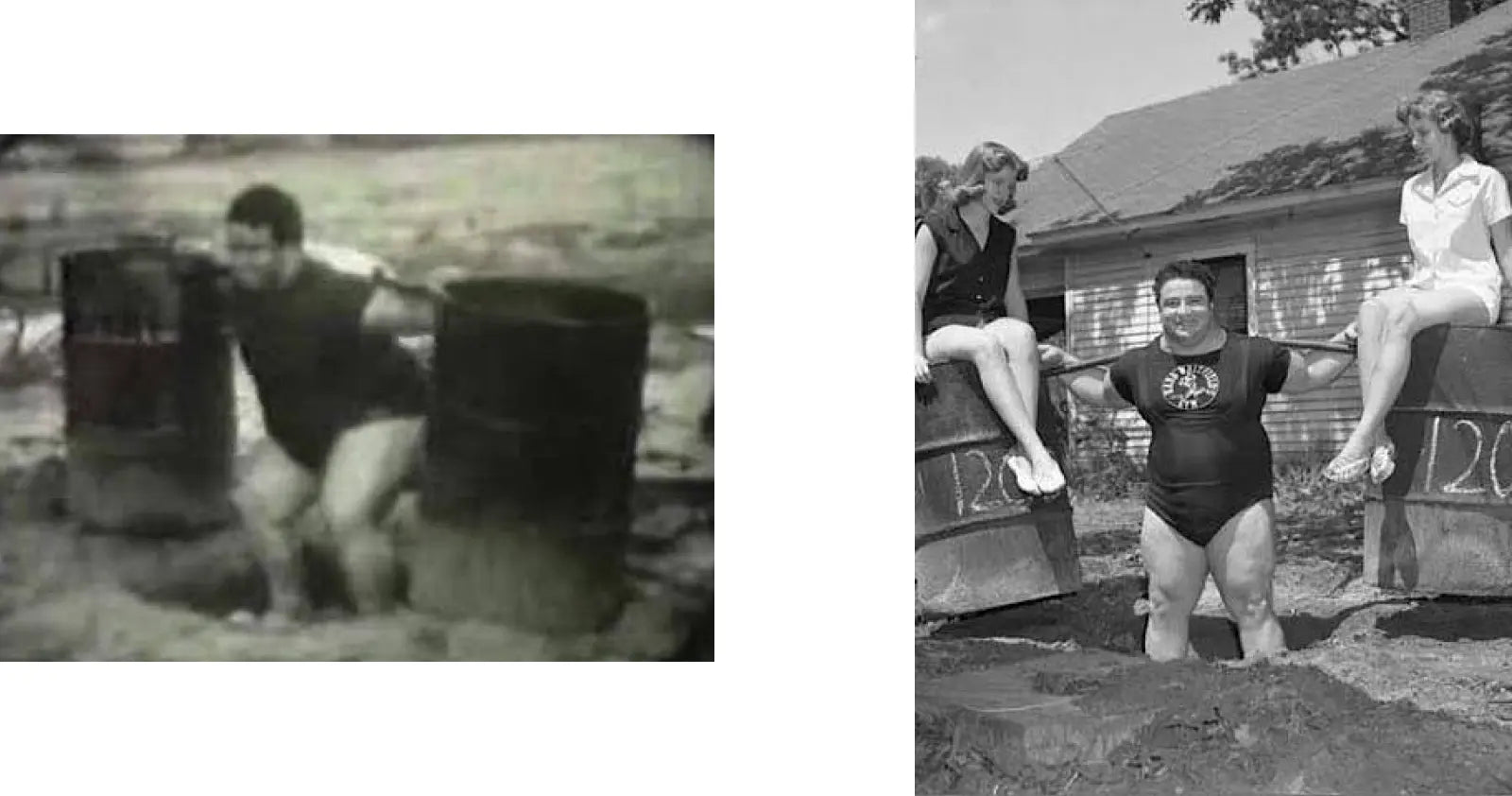
Neurological Carryover Training: A Guide to Progressive Rack Work for Strength Gains
The neurological carryover training (NCT) method, developed by Paul Anderson, is an effective technique for increasing strength using partial range of motion progressions.
Core Principle: Start with a weight 20-30lbs above your current maximum, performing partial movements that gradually increase in range over time.

Man performing bench press in rack
Historical Context: Anderson pioneered this method by digging a hole and placing loaded equipment above it, gradually filling the hole to increase range of motion.

Man lifting large barrel outside
Why It Works:
- Provides controlled overload for neural and muscular adaptation
- Accumulates high-volume exposure to heavy weights
- Reduces Golgi Tendon Organ inhibition
- Builds psychological comfort with heavier weights
Implementation Guide:
- Establish your current maximum lift
- Calculate working weight (7-10% above max)
- Begin at top 1/3rd range of motion
- Plan 8-12 week progression
- Perform 2 working sets per session
- Progress through positions until reaching full range
Sample Weekly Structure:
-
Session 1:
- NCT progression
- Bottom range work
- 3 targeted muscle exercises
- Back work
-
Session 2 (72h later):
- Strength-skill work (80-85% max)
- Weak point exercise
- 3 targeted muscle exercises
- Back work
Progression Example (425lb working weight):
- Week 1-2: Position 1 (14-16 reps)
- Week 3-4: Position 2 (10-12 reps)
- Week 5-6: Position 3 (5-7 reps)
- Week 7-8: Position 4 (4-5 reps)
- Week 9: Position 5 (3 reps)
- Week 10: Full range (1 rep)
Best suited for deadlift, squat, and bench press. Allow full recovery between sessions and focus on one lift per training cycle.
